| What is a booth slide?
A common enough question for artists who have never applied
to an art show. The simple answer is a picture of your display as if it
were set up at an art show. And it must include your art. |
|
How do art
shows use your booth slide? Every show is different. Some art shows don't use it
or even ask for it. Some art shows treat it with equal weight as any of your jury
images or maybe even more so. Some only use it as a tie breaker if both you and another artist
are competing for a single space. And besides
showing the jury that you can set up a professional display, it gives the
jury a sense of scale or size of your work. But since not knowing
how important it is, you should strive to put together the most professional
looking booth slide you can. |
Additional information added in May 2010
There is a new trend among art shows to ask for a more accurate booth
image. One major show is asking for very accurate booth picture. Even
down to the number of pieces hanging or the height of the booth.
Another major outdoor show is asking for an outdoor booth image and
calling artists who submit applications with an indoor booth picture.
It's getting tougher and more competitive out there. |
|
| If you've never applied to one, I suggest
walking an art show and paying attention to how artists are setting up
their booths. That will give you an idea of what kind of display props and
tent you should be looking to purchase. |
| There are two schools of thought. One
school thinks the booth picture should be exactly as your booth appears at
an art show, bins and all. The other school of thought is that your booth
picture should show your artwork as if it were being viewed in the finest
art gallery or museum. Fortunately, art shows don't actually define the
booth image or we would probably need a different booth image for each
show we apply to. |
| Tip. I've recently started hearing
that some art shows actually print out the booth image and use it for on
site enforcement of how much is included in the booth. Tip. If you
normally include more than one style of work in your booth, but only use
one style for jurying, consider having all styles you intend to sell in
your booth slide. It could save you from being asked to either put some
work away or in extreme case being asked to pack up and leave the show. |
| Some photography guidelines. Use a tripod
or some other means of camera support. An outdoor booth picture
should be taken under a white canopy. I recommend hanging three canopy walls
so nothing distracting is seen through your booth. Make sure to
NOT include any identifying (or handmade) signs or people in your booth. Tip.
The best booth pictures are taken when the booth is set up for the
picture, not as an afterthought at an art show, though that's when most
booth pictures are taken. If you do shoot your booth slide at a show, make
sure to set the booth up for the photograph, then reset it up to sell
after the photo is taken. Tip. A white canopy photographed in
sunlight becomes a magnet in a jury room because your eyes automatically
get drawn to the brightest part of an image, or brightest image when
they're projected simultaneously. Therefore, when I work on images for
artists, I crop to minimize how much of the canopy is visible in the image
as you can see in the photography booth without bins. |
| With the introduction of digital jurying,
artists seem to be coming out of the woodwork to apply to art shows. First
time artists who have never done an art show usually have the most
questions about a display. What most of the ZAPP shows have done is create
an emerging artist category where either a grouping of artwork or
just another individual artwork piece is specified as the booth in the
ZAPP image upload. If you fall into that category, you must read the
instructions carefully or call the show with questions on how the display
image should be handled. For artists that get accepted in the
emerging artist category, the shows (I know that Main Street Fort Worth
does) usually supply the necessary display equipment. |
| Though it's mainly for 2D art, there are resources
for purchasing
display equipment on the
companion web site of my Art Show Photography Forum |
| The photographs below are examples of
different types of booth jury slides and can be used for ideas on how to
photograph your own display. The one thing that they all have in common
is the display items (racks, pedestals, canopy, etc.) and presentation of
the art is professional looking. |
| 
|
| Photography booth
slides - with and without bins of unframed work. Because art shows are
looking for more accurate booth images, I photographed my booth with a
wider angle lens showing all three walls clearly and then I added the bin
afterwards from one of my older booth pictures |
Booth Pictures submitted with the Sunshine Artist Article
September 2014 |
|
|
|
|
|
|
|
|
Booth Pictures originally from older articles on this page |
|
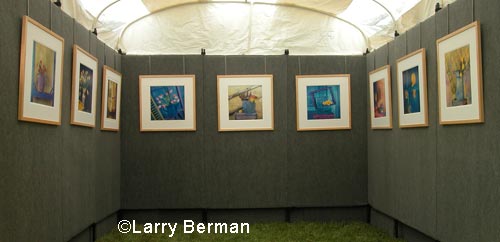 |
|
 |
|
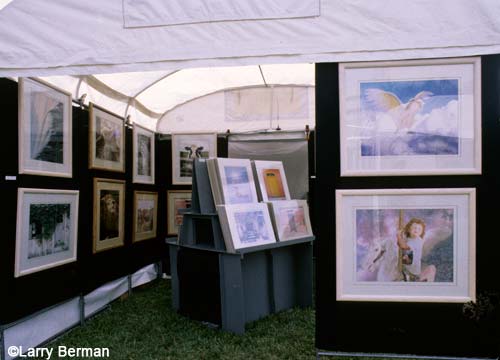 |
|
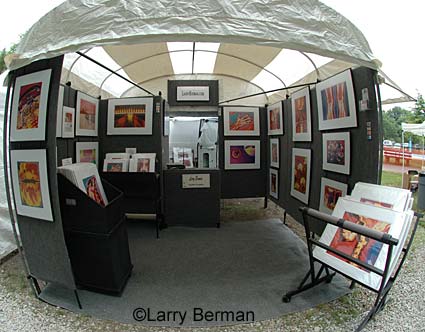
|
|
Jewelry booth slides (below) |
|
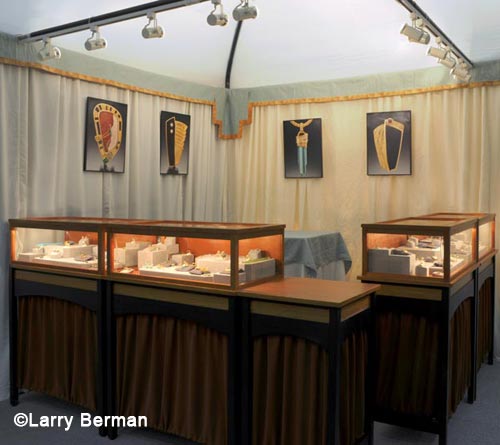
read more about how this jewelry booth slide was taken |
|
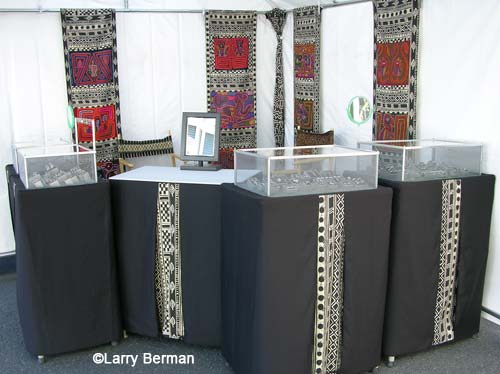 |
|
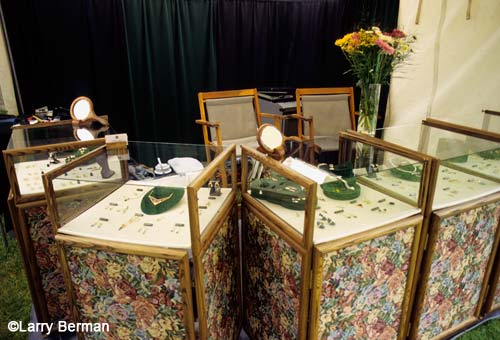 |
|

outdoor jewelry booth |
|
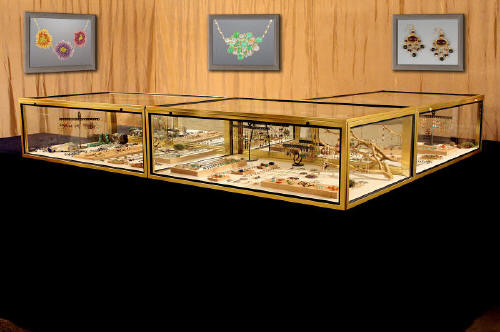
indoor jewelry booth |
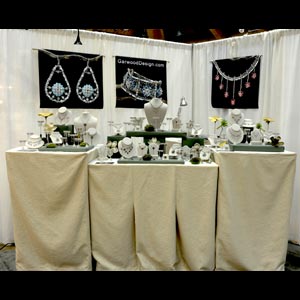 |
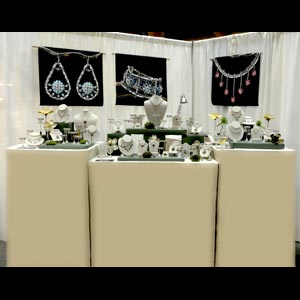 |
| Before and after
showing why your display needs to be perfect. I ended up taking the
wrinkles out in Photoshop |
|
| Mixed Media booth slides
(below) |
|
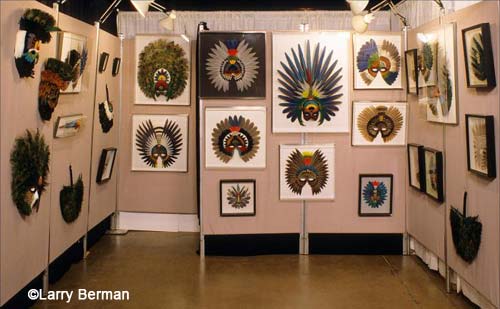
|
| Sculpture booth slides (below) |
|
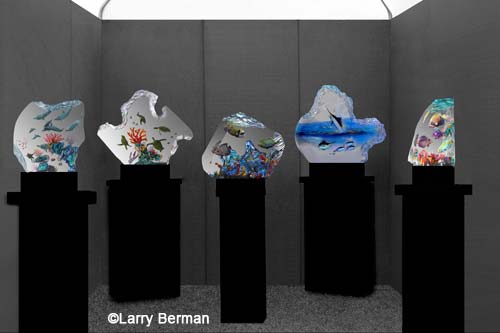 |
|
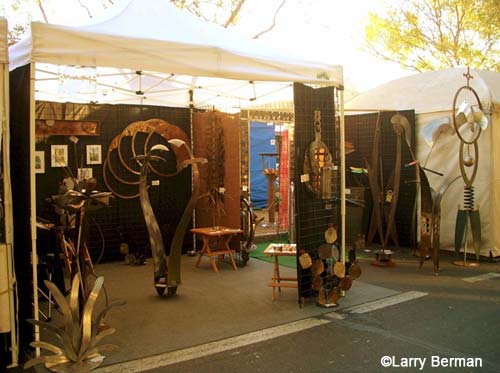
|
| |
| |
Thanks to all the artists that
contributed their booth images.
Disclaimer. I'm not responsible for
anyone getting rejected from a show based on reading the content of this
web page. But you can give me the credit for any acceptances. |
|
Digital Jury Resources |
|
Hire me
to Prepare your Digital Jury Images |

